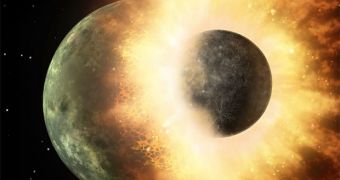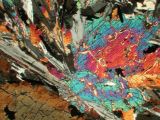Ideas about the Moon's origins have been around since the dawn of mankind. An increasingly popular one is that the Moon is the result of a collision between an early planet and a very young Earth which resulted in the Earth we know now and the Moon.
It's the most spectacular hypothesis, compared to other such as being formed elsewhere in the Solar System and becoming attached to Earth's gravity or being formed from material lifted from our planet by centrifugal force when it was still a molten rock ball.
There has been some evidence of a giant collision forming the Moon, but now scientists at the Washington University in St. Louis and the University of California San Diego say they have finally found conclusive evidence, the type scientists have been trying to find for three decades.
Their study is published in the Nature journal. This evidence is an abnormally high percentage of heavy Zinc isotopes found in Moon rocks. That may not sound like much, but the difference is big enough to make it significant.
They found 10 times more heavy isotopes than would be normally found on Earth or other bodies in the Solar System. This type of anomaly can only be explained in one way.
When bodies the size of planets collide, huge amounts of material, even normally solid elements such as zinc, vaporize. However, the speed at which they vaporize depends on their weight, heavier elements and even heavier isotopes will vaporize slower than lighter ones.
What this means is that lighter isotopes will become more common in the vaporized material while heavier ones will remain in solid state.
During the hypothetical collision between Earth and the protoplanet which has been called Theia, if indeed it existed, large amounts of material would have been melted and vaporized.
Heavier elements from the two bodies would have been pulled together and sunk to the Earth's core while lighter elements spun off to form what is now the Moon.
This explains the relatively small iron core found inside the Moon compared to other bodies in the Solar System.
Also during the collision, large amounts of vaporized material would have been lost in space. Parts of the material that didn't vaporize went on to become the moon.
Scientists expected that, if that were the case, they would find larger concentrations of heavier isotopes in Moon rock samples and that's exactly what this new study found.
Currently, there is no other known method through which this concentration would have been achieved. The researchers looked at Moon rocks from 20 different remote locations and found the same results.

 14 DAY TRIAL //
14 DAY TRIAL // 
